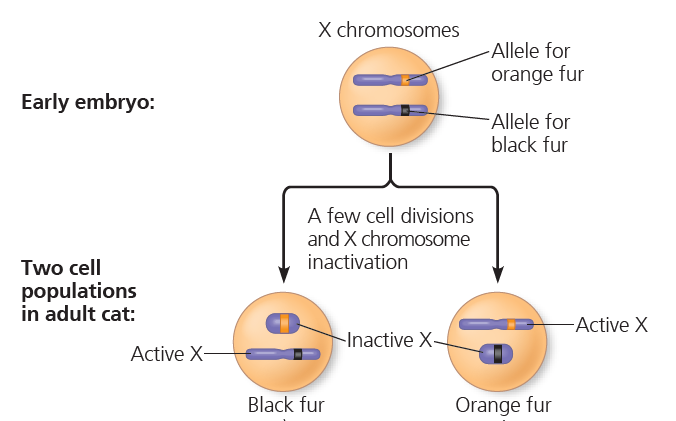Table of Contents
I. Introduction
- Female mammals, including humans, inherit two X chromosomes
- The number of X chromosomes is twice the number inherited by males
II. X Chromosome Inactivation
- One of the X chromosomes in each cell of a female mammal becomes inactivated during early embryonic development
- The inactive X chromosome condenses into a compact object called a Barr body
- Most genes of the X chromosome that forms the Barr body are not expressed
- In the ovaries, Barr body chromosomes are reactivated in cells that give rise to eggs
III. Selection of Active X Chromosome
- The selection of which X chromosome will form the Barr body occurs randomly and independently in each embryonic cell
- Females consist of a mosaic of two types of cells: those with the active X derived from the father and those with the active X derived from the mother
- If a female is heterozygous for a sex-linked trait, about half of her cells will express one allele, while the others will express the alternate allele
IV. X Inactivation Process
- Inactivation of an X chromosome involves modification of DNA and proteins bound to it
- A particular region of each X chromosome contains several genes involved in the inactivation process
- One of the genes, called XIST, becomes active only on the chromosome that will become the Barr body
- RNA products of the XIST gene attach to the X chromosome on which they are made, initiating X inactivation
V. X Inactivation in Humans
- Mosaicism can be observed in humans with recessive X-linked mutations
- A woman who is heterozygous for a certain recessive X-linked mutation has patches of normal skin and patches of skin lacking sweat glands
VI. Conclusion
- X inactivation in female mammals ensures that cells of females and males have the same effective dose of most X-linked genes.
